Too much or too little?
Benefits of Risky Play vs Too Much Regulation vs Unintended Consequences
It is somewhat of a delicate balancing act between providing enough safety requirements to keep children from being seriously harmed while not tipping the scale away from our ability to provide more challenging risky play opportunities. In reviewing the scoping statements of various international playground equipment and surfacing standards, it appears this line is blurred. How much regulation is needed to meet the needs of children as they seek the thrill of challenge versus the unintended consequences when their developmental abilities are inadequate to assess their risk of harm? What level of consequence (severity of injury) is a fair trade-off for the developmental benefits of risky challenging play opportunities?
Falls to Surface - Number one cause of injury and one of four top causes of death on playgrounds
We have known since the early 1970s the number one cause of serious playground injuries requiring medical attention is falls to the surface. What frequency and severity of fall-related injuries can we live with? Most of these fall injuries result in long bone fractures, which occur far more frequently than a serious head injuries. Which injury is more severe? It depends on the level of severity, which is determined by trained medical professionals using the Abbreviated Injury Scale (AIS) rating system.
The causes of these fall-related injuries are many. Sometimes the child lacks the physical and cognitive abilities necessary to successfully use the equipment as intended or the child decides to use the equipment in unintended ways. The equipment may have had some design issues or it was not properly installed. Often the owner/operator does not maintain the equipment or surfacing in accordance with the manufacturer’s instructions, and the equipment breaks or the surfacing no longer provides the minimum protection required by the standards.
What about those serious injuries that occur on playgrounds that are well maintained within the minimum requirements of the standards? Should injuries occurring on playgrounds meeting or exceeding standards’ requirements be accepted as a part of everyday life, or should there be some change in our approach to the cause and effect of falls on the playground surface?
The effort to reduce the current impact attenuation thresholds set by ASTM International (ASTM) F1292 (Standard Specification for Impact Attenuation of Surfacing Materials within the Use Zone of Playground Equipment) has been going on for a long time. Parties on both sides of the issue have done their best to bring the most current information to the attention of the F08.63 (Playground Surfacing Systems) Subcommittee members.
A look at the recent vote to change from 1000 HIC to 700 HIC
Before getting into the real issue of surfacing performance and injury reduction, let’s address a little issue related to accusations made against the ASTM International organization and its members. ASTM and the ASTM F08.63 Subcommittee are due an apology for some of the comments that have been made and/or implied on how the ASTM and their volunteer members conduct the business of developing voluntary industry standards.
The following statement was written by one of the interested parties against the threshold reduction to 700 HIC (Head Injury Criterion), and is true, to some extent.
“This is a complex issue with strongly-held views. I will continue to foster reasoned, constructive debate and share news and views, here and elsewhere, to the best of my ability – though there are challenges, not least the lack of transparency in ASTM’s decision-making. To repeat: there is no doubt that the extent of debate and opposition to ASTM’s proposal has helped to get this result.”
Determining what is the appropriate impact attenuation threshold is a complex issue, but to imply the ASTM process is underhanded and non-transparent or flawed could not be further from the truth. The question still remains whether the outcome of the last ballot and the successful appeal was the correct result. Let’s start with some background information to the issue at hand.
Here are the facts on the ASTM Process
There are many Committees within the ASTM organization. There are 36 Subcommittees within the F08 (Sports Equipment, Playing Surfaces, and Facilities) Committee. The F08.63 Subcommittee is responsible for all playground-related surfacing standards and guides. This Subcommittee currently has about 160 voting members. Once a Subcommittee ballot item has gone through the Subcommittee approval process, it must then be upheld by the Main Committee ballot. The point is there are many opportunities for the dissenting opinions on any issue to have their negative vote and rationale heard.
"ASTM and the ASTM F08.63 Subcommittee are due an apology for some of the comments that have been made..."
In this instance, the ASTM International voting process was followed. A 90% affirmative vote is required to continue to move the ballot issue forward to the next step in the approval process. The results in this first ballot were overwhelmingly in favor of the change (> 9 to 1). The next step in the voting process is to address any negative votes. The few negative votes received were then reviewed by the task group. Written rationale was provided to find the negative votes non-persuasive. The rationale for finding the negatives non-persuasive was put in the form of a motion and a ballot was voted on by the entire F08 Main Committee. The results of this ballot were again overwhelmingly in favor of the change (> 8 to 1) to reduce the HIC to 700. This step requires a super majority (> 2/3rds) affirmative vote. All ballots are then approved by the ASTM Committee on Standards (COS) before they can get published.
An appeal was made to the ASTM Committee on Standards. The appeal findings had nothing to do with the merits of the change to the HIC. The issue was whether or not the Subcommittee properly handled the negative vote process. The primary issue had to do with the timeline in which supplemental information related to the ballot item was sent to the Chair and distributed electronically to all F08.63 Subcommittee members. This information was believed, by some, to support those members who voted in opposition to the proposed HIC reduction. Distribution of these materials occurred after the ballot was posted for the vote to find the negative voters’ rationale non-persuasive. By the time the documents were distributed, some ASTM members had cast their vote. Regardless of the timeline issue, the documents were sent to everyone and the voting deadline was extended. Anyone who wished to change their vote was allowed to do so. The voting results were as stated above.
If these voting results had been upheld by the COS, the reduction of the HIC from 1000 to 700 would have occurred. The COS heard and upheld the appeal based on the timeline for how this new information was handled in relationship to the ballot posting and closing dates. COS thought there should have been more time allowed prior to the ballot closing date or the ballot should have been delayed. The COS ruling on this appeal required this ballot item go out to a vote once again.
Did new documents in question support no change to the 1000 HIC?
So you might ask, what was so compelling about this new information in support of the status quo of 1000 HIC? Prior to the appeal hearing and action by the ASTM COS, the information in question was presented and discussed at the ASTM F08.63 Subcommittee meeting. I was at that meeting. It was a very lively discussion. These papers were determined to be of no consequence to the matter being balloted as they did not support either lowering or leaving the HIC at 1000.
Some of the so-called supporting documents were National Electronic Injury Surveillance System (NEISS) findings on fall injury reports and serious head injury reports from 2001-2008. What these reports do not represent is the real number of fall-related injuries and how many of these falls resulted in serious head injuries. NEISS report analysis is a statistical sampling of a small number of pre-selected hospitals that would be representative of the demographic distribution of all Americans. So NEISS numbers are a statistical projection of injuries based on the information gathered by the NEISS participating member hospitals. The information gathered from these reported fall injuries does not give enough detailed information about the accident to assist in this surface performance debate. Some just state, “person fell to surface.” Nothing is known about the characteristics of the surface or if it was compliant. The report states the person was transported to the hospital by ambulance, treated, and released. It is not known the extent of the injury or if there was any negative impact to the injured party after that initial treatment. Very few people stay in hospitals overnight if they can be observed, cared for, and treated at home. Are these injuries serious or not? Can anyone determine how many serious head injuries are too many? Is a number really necessary? There seem to be more questions than answers.
"The study’s conclusion that 12 compressed inches of this sand is superior to 12 compressed inches of wood chips raises some additional questions about surfacing recommendation in the U.S. Consumer Product Safety Commission’s Public Playground Safety Handbook..."
The other research document was a research paper titled, School Playground Surfacing and Arm Fractures in Children: A Cluster Randomized Trial Comparing Sand to Wood Chip Surfaces (Howard, 2009). This study was based on the Toronto Public School’s experience with injury reduction. This study appeared to have too many unanswered questions to provide concrete evidence that the 1000 HIC was adequate or that the benefits of a reduction to 700 HIC were measurable and substantial enough to be worth the cost.
Two Points of View - What can we learn from the Howard Study?
Since the initial discussion on the Howard Study and after the COS appeal decision, there were two presentations made by Subcommittee members at the following May ASTM meeting in Anaheim, California. These presentations were based on the findings of the Howard Study. This research paper was about injury reduction in Toronto Public Schools. The focus was on which of two types of loose-fill surfacing material was most effective in injury reduction, primarily fractures: wood chips or granitic sand. The study concluded a higher reduction in fractures on this special granitic sand than with wood chips.
The study’s conclusion that 12 compressed inches of this sand is superior to 12 compressed inches of wood chips raises some additional questions about surfacing recommendation in the U.S. Consumer Product Safety Commission’s Public Playground Safety Handbook, since it still shows a 4 foot critical height for 9 inches of compacted sand. This study proves that not all sand is the same or performs equally. While depth of surface material can have an effect on performance, there is no guarantee that more depth will result in better impact-attenuating results.
What the study does not discuss are the changes the school district made to their playground design guidelines prior to the study. Before the study and new school guidelines there were many very tall wooden structures that did not conform to the Canadian Standards Association (CSA) requirements. New policies were put in place that in effect brought all equipment and surfacing into compliance with current CSA Standards. This resulted in a lower fall height for most play equipment. These guidelines also required that a minimum depth of at least 12 inches for granitic sand or wood chip products be installed and maintained. Again, it is important to point out these conditions did not exist prior to the study. The study conducted after the equipment and surface improvements did show a significant injury reduction, but nobody took into consideration the performance of the preexisting surfaces in the Toronto Schools or the fall height of the old play equipment that contributed to all the baseline injury data. So, what is the reason or reasons for the lower incidence in fractures and other serious injuries?
One Anaheim presenter secured copies of actual field drop test reports from the Toronto Public Schools. He concluded that the field test results showed excellent impact attenuation of less than 500 HIC and 100g was the reason for fewer injuries. The other presenter concluded that surfaces which are in compliance with the existing standard thresholds of 200g and 1000 HIC resulted in fewer injuries. Which conclusion is more compelling? The actual in-field drop test reports for the Toronto Public Schools demonstrate impact attenuation results were both 50% better than current threshold requirements of 1000 HIC and even 50% better than the proposed reduction to 700 HIC. There are other variables that were not taken into consideration in the Howard Study, which would add to this discussion, but that horse has already left the barn. So what else, if anything, does the study show?
First, we must consider the injury reduction results are based on lower equipment fall heights along with a minimum maintained 12 inch depth of surface materials. These conditions did not exist prior to the study. Regardless, the Howard Study demonstrates a lower HIC threshold will have a measurable reduction in frequency and severity of all fall-related injuries. The study also demonstrates not all sand performs equally. This granitic sand, which is found in Ontario Canada, has superior impact-attenuating properties, primarily because it is very uniform in particle size minimizing compaction characteristics.
More thoughts
The ASTM Committee on Standards appeal was over nothing more than the timing of the release of the information presented. The appeal argued that the late distribution of the supporting documents in support of the negative voters’ position affected the voting results. These documents ultimately were discussed at two Subcommittee meetings. The discussion did little to persuade any voters one way or the other.
Using the Howard Study along with the actual on-site surfacing drop test results makes for a pretty good argument that fewer fall-related injuries, including fractures and head injuries, will occur on surfaces with impact thresholds, even lower than the proposed 700 HIC. These results can only be realized one of two ways: lower the fall heights or improve the performance of impact-attenuating surfacing systems. These surfacing systems must also be managed by conscientious and knowledgeable staff who implement a consistent inspection and maintenance program.
Moving forward, we might begin to see the real correlation between surface performance and severity of injury if actual field drop test results were taken immediately after every serious fall-related playground injury. Some are requesting this kind of data before voting to reduce HIC thresholds. For many legal reasons this is unlikely to happen. What we can do is use the best information available. The automotive industry has 50 years of experience in the area of impact injury research. Why not start with that?
Playground Surfacing Requirements and Injury Reduction: How much of either is enough?
Where has this debate on lowering the HIC threshold got us to date?
We have expended a tremendous amount of human and financial resources, and we seemingly appear to have made no real progress. Fall-related injuries continue at the same rate year after year. Many playgrounds are neglected by those responsible for their day to day existence. Caregivers neglect their responsibilities to supervise those under their care. And when an injury occurs, nobody wants to take full responsibility for their actions, so they spend more money, time, and effort trying to place blame on someone else. This paradigm needs to change. More money, time, and effort needs to be spent on educating the general public and those responsible for the management of these playgrounds. This is not ASTM’s responsibility. Owners need not seek new revenue sources for training those staff responsible for the purchase, design, installation, inspection, and maintenance/repair of their playgrounds. What they need to do is redistribute existing funds and human resources from within their operation to address their minimum responsibilities as stated in current standards and guidelines.
Some still call for research related specifically to the playground environment and not the automotive industry. What do automobile impact injuries have in common with a child’s playground? Some still argue there is no relevance to this discussion. We need to remember why the playground safety movement began and from where we got most of the scientific research assistance to address the known injuries based on the current user patterns of the 1970s, ’80s, and ’90s.
What have we learned from the past about fall-related impact injuries?
The current surfacing performance impact threshold was based on the best information available in the early 1970s. Dare I say times have changed? There is much more medical and biomechanical research available today than when the ASTM and CPSC first looked at reducing fall-related impact injuries. We now have the ability, if we choose, to evaluate the performance of each and every playground surface in the field and do not have to rely on some laboratory test that was done on some samples made in a controlled environment and tested according to the ASTM F1292 laboratory test. How does that laboratory performance test translate to what is actually installed on site?
What we know.
We know surface systems which do not exceed the 200g and 1000 HIC threshold are compliant.
We know that most serious head injuries do not occur from a fall in which the user lands head first.
We know that today’s standard risk curve shows a 15% probability of a life-threatening head injury.
We more recently have learned body blows can transfer enough trauma to create serious head injury.
We know the current standard scope is to address serious head injury, and not long bone fractures.
We know many long bone fractures could be classified as severe and debilitating by most international health mandates for children's injury prevention.
We know this severity level for these types of injuries would not need to be addressed by the current scope of almost every international standard in existence.
Today, what we are learning is there is more supporting evidence that the frequency of fracture probability as a consequence of impact decreases when the fall results in a G-max of 250 to 200 to 150 to 100.
Lastly, but maybe most importantly, we seem to be willing to ignore the fact that whatever performance threshold we select shall reflect the desired outcome of our standard’s scope.
Impact injury thresholds in the current scope of international injury prevention standards
What is that magic number for our surfacing standard? I do not know, but people much smarter than I have suggested that a G-max threshold of 100 would significantly reduce both the frequency and severity of fractures and serious head injuries. This can only be accomplished by lower fall heights or better performing surface systems. In 2011, ASTM F1487-11 reduced the swing impact test threshold to 100g and 500 HIC without any negative concerns raised by the voting membership. The Canadian Standards Association for public playground equipment (CSA Z614-14) uses exactly the same threshold as the ASTM Standard. Many years before the ASTM took action on swing impact thresholds, the British Standards Institute (BSI) reduced their playground swing impact threshold to a maximum peak G of 50, which is half that of the current threshold used in the ASTM and CSA Standards. The BSI standard was subsequently adopted by the German DIN Standard prior to the creation of the European Standard.
Significance of automotive industry to the swing impact threshold and playground safety standards
The BSI reduced their swing seat as a result of the research of Sutcliffe Play Ltd., a leading manufacturer of swing seats worldwide. This research was conducted to reduce the impact of traditional wooden bench swing seats being used up until the late 1970s. During the late 1960s and ’70s, there was increasing concern about the safety of playgrounds in the UK and elsewhere. There were a number of highly publicized accidents that formed the basis of a playground safety lobby. Research was also published by Dr. Illingworth in 1975 showing that the majority of accidents were the result of falls to the surface and by children being hit by wooden swing seats. The largest single cause of injury in playgrounds was due to impact with hard surfaces, and head impacts accounted for the majority of the serious injuries reported. It therefore followed that the provision of energy-absorbing surfaces would do much to reduce the incidence and severity of playground accidents.
At this time, Sutcliffe Rubber Company was already working in the field of play and sports, making gym and cricket matting, as well as rubber components for the automotive industry. Sutcliffe realized that if they combined their expertise in metal-to-rubber bonding, with their knowledge of the play market, they could increase the safety of playgrounds. Consequently, they developed and patented this flat rubber safety swing seat in 1976 and the first rubber impact-absorbing surface.
Sutcliffe’s research followed the standard adopted by the Franklin Institute Research Laboratories of Philadelphia for impact commonly found in the automobile industry. The Franklin Institute, the most prominent of American mechanics institute of its time, was established in Philadelphia in 1824.This standard, adopted by Franklin Institute, used a maximum peak G of 50, with any impact over that considered to be unsafe. Sutcliffe did a lot or research and testing with the Institute to come up with a superior seat that would perform well below the standard of 50g. Sutcliffe utilized the theory of buckling struts, which is commonly used by the automobile industry to absorb energy. In the swing seat, buckling struts are created by a cellular structure of two rows of holes, which deform on impact should the seat hit a child. The new seat peak G impact was just 4% of the wooden seat.
The British Standard and the EN Standard now require an impact threshold of less than 50g for swing seats less than 900 mm or 36 inches in diameter and less than 125g for seats greater than 36 inches in diameter. There is no reference to the HIC equivalent to G-max. I am not aware of what BSI or EN’s rationale is for the 50g and 125g numbers other than the historic significance of Sutcliffe and the Franklin Institute’s adopting the standard of a maximum peak G of 50 to address the likelihood of serious head impact injury and possibly the zygoma skull fracture impact data.
The ASTM F15.29 Subcommittee’s Swings Working Group rationale for reducing the swing seat impact threshold to 50% of the current surface impact compliance threshold allowed that this new Dynamic Swing Impact Test Method would reduce the likelihood of a serious swing impact head injuries and allow for larger multi-occupancy swing experiences. This change was therefore thought to be within the scope of the current standard for injury reduction and allow more challenging swinging experiences.
Back to the Surfacing Threshold Debate
MYTH: The automotive industry research has no relevance to the international playground industry performance standards. Opponents to the reduction of the HIC argue there is no evidence of a relationship of injury reduction research from the automotive industry to the playground industry.
FACT: All international playground safety performance standards have used the automotive industry research more frequently than they may realize as the development of the swing seat impact performance standard illustrates. Today, other standards development efforts are using the automotive industry research to make consumer safety improvements to reduce injuries to children. This argument no longer holds water.
The initial research which has created the current F1292 Impact Thresholds of 200g and 1000 HIC came from research completed on behalf of the U.S. military and the automotive industry. Had ASTM or CPSC waited for playground-related injury research to quantify and support the need for lower swing impact and surfacing impact thresholds, we still would not have a standard.
MYTH: Reducing the surface impact attenuation threshold to 700 cannot demonstrate evidence of any real reduction in fall-to-the-surface related injuries.
FACT: A reduction in HIC from 1000 to 700 will lower the current 15% probability of a serious head injury to less than 5%. Five percent probability of a serious head injury is considered statistically insignificant, and therefore the chance for a serious head injury is almost non-existent. This number reduces the severity of injury based on the Abbreviated Injury Scale (AIS) from a solid 4 (severe, life threatening, survival probable) to a 3 (serious, debilitating with a legacy of more than one month). Lowering the HIC to 700 would also significantly lower G-max. The logic of the EN Standard not exceeding an impact of 125g for a swing seat greater than 36 inch in diameter suggests there might also be a reduction in long bone fractures. Unfortunately, there currently does not appear to be any empirical research to give us that quantitative answer many seem to be demanding before they will entertain any reduction to current F1292 threshold levels.
Automotive industry’s R and D prevents playground injuries
The Sutcliffe Rubber Company’s safety swing story is interesting one in the history of children’s injury prevention. It has some relationship to the playground surfacing performance dilemma we find ourselves wrestling with for almost a decade. While swing impact injuries were only a small number of the total playground injuries in the UK, the severity of these injuries were a concern to many. Sutcliffe conducted research and development on how to reduce impact injuries caused by the typical wooden bench style swing seat. They used standards adopted by a reputable mechanical engineering institute that was being used in the automotive industry to reduce impact injuries. The Sutcliffe Rubber Company was already making products for both the automotive and playground industry. They started with playground surfacing rubber safety tiles and now swing seats. It did not take Sutcliffe Rubber Company years to bring their seat to the marketplace. I bet the seat almost sold itself with the assistance of a great piece of marketing literature. I would venture to say that there was a great deal of expense placed on developing such a seat. There was the ongoing cost to the playground owner to comply and purchase and replace these seats as necessary.
The British Standard swing impact requirement was far more restrictive than anything in the current international standards. They were able to convince the Germans to adopt the requirement in the DIN Standard. Later, it has been adopted in the current EN Standard with some additional modifications. Were there calls for risk benefit analysis before making this a requirement?
This playground compliance requirement is currently more severe to that of Canada or the USA for such a small number of severe injuries. They and we both know that if a child is hit in the head by an empty hard wooden or metal or even a hard rubber swing seat, they can sustain a serious head injury. That is why the standard was created. We also know that if a child falls on surfacing that is installed and maintained to the current thresholds, they stand a 15% probability of sustaining a life-ending injury, yet we have not moved to reduce these thresholds. Thankfully, there aren’t many young children that have lost their lives falling on a playground. Tell that to the parents of a child that did.
What is the magic number?
Ken Kutska- We have expended a tremendous amount of human and financial resources and seemingly appear to have made no real progress. Fall related injuries continue at the same rate year after year. Many playgrounds are neglected by those responsible for their day to day existence. Caregivers neglect their responsibilities to supervise those under their care. And when an injury occurs, nobody wants to take full responsibility for their actions so they spend more money, time, and effort trying to place blame on someone else. This paradigm needs to change. More money, time, and effort needs to be spent on educating the general public and those responsible for the management of these playgrounds. This is not ASTM’s responsibility. Owners need not seek new revenue sources for training those staff responsible for the purchase, design, installation, inspection and maintenance/repair of their playgrounds. What they need to do is redistribute existing funds and human resources from within their operation to address their minimum responsibilities as stated in current standards and guidelines.
Some still call for research related specifically to the playground environment and not the automotive industry. What do automobile impact injuries have in common with a child’s playground? Some still argue there is no relevance to this discussion. We need to remember why the playground safety movement began and from where we got most of the scientific research assistance to address the know injuries based on the current user patterns of the 1970s, 80s, and 90s.
What have we learned from the past about fall related impact injuries?
Current surfacing performance impact threshold was based on the best information available in the early 1970s. Dare I say times have changed? There is much more medical and biomechanical research available today than when the ASTM and CPSC first looked at reducing fall related impact injuries. We now have the ability, if we chose, to evaluate the performance of each and every playground surface in-the-field and do not have to rely on some laboratory test that was done on some samples made in a controlled environment and tested according to the ASTM F1292 laboratory test. How does that laboratory performance test translate to what is actually installed on site?
What we know.
We know surface systems which do not exceed the 200g and 1000 HIC threshold are compliant.
We know that most serious head injuries do not occur from a fall in which the user lands head first.
We know the today’s standard risk curve shows a 15% probability of a life threatening head injury.
We more recently have learned body blows can transfer enough trauma to create serious head injury.
We know the current standard scope is to address serious head injury, and not long bone fractures.
We know many long bone fractures could be classified as severe and debilitating by most international health mandates for children’s injury prevention.
We know this severity level for these types of injuries would not to be addressed by the current scope of almost every international standard in existence.
Today what we are learning there is more supporting evidence that the frequency of fracture probability as a consequence of impact decreases when the fall results in a G-max of 250 to 200 to 150 to 100.
Lastly, but maybe most importantly, we seem to be willing to ignore the fact that whatever performance threshold we select shall reflect the desired outcome of our standard’s scope.
Impact injury thresholds in the current scope of international injury prevention standards
What is that magic number for our surfacing standard? I do not know but people much smarter than I have suggested that a G-max threshold of 100 would significantly reduce both the frequency and severity of fractures and serious head injuries. This can only be accomplished by lower fall heights or better performing surface systems. In 2011 ASTM F1487-11 reduced the swing impact test threshold to 100g and 500 HIC without any negative concerns raised by the voting membership. The Canadian Standards Association for public playground equipment (CSA Z614-14) uses exactly the same threshold as the ASTM Standard. Many years before the ASTM took action on swing impact thresholds, the British Standards Institute (BSI) reduced their playground swing impact threshold to a maximum peak G of 50 which is half that of the current threshold used in the ASTM and CSA Standards. The BSI standard was subsequently adopted by the German DIN Standard prior to the creation of the European Standard.
Significance of automotive industry to the swing impact threshold and playground safety standards
The BSI reduced their swing seat as a result of the research the Sutcliffe Play Ltd., a leading manufacturer of swing seats worldwide. This research was conducted to reduce the impact of traditional wooden bench swing seats being used up until the late 1970s. During the late 1960’s and 70’s there was increasing concern about the safety of playgrounds in the UK and elsewhere. There were a number of highly publicized accidents that formed the basis of a playground safety lobby. Research was also published by Dr. Illingworth in 1975 showing that the majority of accidents were the result of falls to the surface and by children being hit by wooden swing seats. The largest single cause of injury in playgrounds was due to impact with hard surfaces and head impacts accounted for the majority of the serious injuries reported. It therefore followed that the provision of energy-absorbing surfaces would do much to reduce the incidence and severity of playground accidents.
At this time, Sutcliffe Rubber Company was already working in the field of play and sports, making gym and cricket matting, as well as rubber components for the automotive industry. Sutcliffe realized that if they combined their expertise in metal-to-rubber bonding, with their knowledge of the play market, they could increase the safety of playgrounds. Consequently they developed and patented this flat rubber safety swing seat in 1976 and the first rubber impact absorbing surface. Sutcliffe research followed the standard adopted by the Franklin Institute Research Laboratories of Philadelphia for impact commonly found in the automobile industry. The Franklin Institute, the most prominent of American mechanics institutes of its time, was established in Philadelphia in 1824.This standard, adopted by Franklin Institute, used a maximum peak G of 50, with any impact over that considered to be unsafe. Sutcliffe did a lot or research and testing with the Institute to come up with a superior seat that would perform well below the standard of 50G. Sutcliffe utilized the theory of buckling struts which is commonly used by the automobile industry to absorb energy. In the swing seat, buckling struts are created by a cellular structure of two rows of holes, which deform on impact should the seat hit a child. The new seat peak G impact was just 4% of the wooden seat. The British Standard and the EN Standard now require an impact threshold of less than 50g for swing seats less than 900 mm or 36 inches in diameter and less than 125g for seats greater than 36 inches in diameter. There is no reference to the HIC equivalent to G-max. I am not aware of what BSI or EN’s rationale is for the 50g and 125g numbers other than the historic significance of Sutcliffe and the Franklin Institute’s adopting the standard of a maximum peak G of 50 to address the likelihood of serious head impact injury and possibly the zygoma skull fracture impact data. The ASTM F15.29 Subcommittee’s Swings Working Group rationale for reducing the swing seat impact threshold to 50% of the current surface impact compliance threshold allowed this new Dynamic Swing Impact Test Method would reduce the likelihood of a serious swing impact head injuries and allow for larger multi-occupancy swing experiences. This change was therefore thought to be within the scope of the current standard for injury reduction and allow more challenging swinging experiences.
Back to the Surfacing Threshold Debate
MYTH: The automotive industry research has no relevance to the international playground industry performance standards. Opponents to the reduction of the HIC argue there is no evidence of a relationship of injury reduction research from the automotive industry to the playground industry.
FACT: All international playground safety performance standards have used the automotive industry research a more frequently than they may realize as the development of the swing seat impact performance standard illustrates. Today other standards development efforts are using the automotive industry research to make consumer safety improvements to reduce injuries to children. This argument no longer holds water.
The initial research which has created the current F1292 Impact Thresholds of 200g and 1000 HIC came from research completed on behalf of the US Military and the Automotive Industry. Had ASTM or CPSC waited for playground related injury research to quantify and support the need for lower swing impact and surfacing impact thresholds we still would not have a standard.
MYTH: Reducing the surface impact attenuation threshold to 700 cannot demonstrate evidence of any real reduction in fall-to-the-surface related injuries will occur.
FACT: A reduction in HIC from 1000 to 700 will lower the current 15% probability of a serious head injury to less than 5%. 5% probability of a serious head injury is considered statistically insignificant and therefore the chance for a serious head injury is almost non-existent. This number reduces the severity of injury based on the Abbreviated Injury Scale (AIS) from a solid 4 (severe, life threatening, survival probable) to a 3 (serious, debilitating with a legacy of more than one month). Lowering the HIC to 700 would also significantly lower G-max. The logic of the EN Standard not exceeding an impact of 125g for a swing seat greater than 36 inch in diameter suggest there might also be a reduction in long bone fractures. Unfortunately there currently does not appear to be any empirical research to give us that quantitative answer many seem to be demanding before they will entertain any reduction to current F1292 threshold levels.
Automotive industry’s R and D prevents playground injuries
The Sutcliffe Rubber Company’s Safety Swing story is interesting one in the history of children’s injury prevention. It has some relationship to the playground surfacing performance dilemma we find ourselves wrestling with for almost a decade. While swing impact injuries were only a small number of the total playground injuries in the UK the severity of these injuries were a concern to many. Sutcliffe’s conducted research and development on how to reduce impact injuries caused by the typical wooden bench style swing seat. They used standards adopted by a reputable mechanical engineering institute that was being used in the automotive industry to reduce impact injuries. The Sutcliffe Rubber Company was already making products for both the automotive and playground industry. They started with playground surfacing rubber safety tiles and now swing seats. It did not take Sutcliffe Rubber Company years to bring their seat to the marketplace. I bet the seat almost sold itself with the assistance of a great piece of marketing literature. I would venture to say that there was a great deal of expense placed on developing such a seat. There was the ongoing cost to the playground owner to comply and purchase and replace these seats as necessary. The British Standard swing impact requirement was far more restrictive than anything in the current international standards. They were able to convince the Germans to adopt the requirement in the DIN Standard. Later it has been adopted in the current EN Standard with some additional modifications. Were there calls for risk benefit analysis before making this a requirement? This playground compliance requirement is currently more severe to that of Canada or the USA for such a small number of severe injuries. They and we both know that if a child is hit in the head by an empty hard wooden or metal or even a hard rubber swing seat they can sustain a serious head injury. That is why the standard was created. We both know that if a child falls on surfacing that is installed and maintained to the current thresholds they stand a 15% probability of sustaining a live ending injury yet we have not moved to reduce these thresholds. Thankfully there aren’t many young children that have lost their lives falling on a playground. Tell that to the parents of a child that did.
How much of either is enough?
Is lowering the Head Injury Criteria (HIC) to 700 the magic number to reduce severity and frequency of fall related injuries? How many children have to be severely injured or die from a fall on the playground before we can justify some enhanced performance measurement for playground surfaces? Why are some questioning the use if the National Highway Transportation Safety Board’s (NHTSB) research as rationale for our surfacing impact thresholds? Some are questioning why we are not following the NHTSB research recommendations for automobile crash protection of 700 HIC for School-age playgrounds and 560 for pre-school age playgrounds. Why use 700 HIC for both? The NHTSB’s action has resulted in a 10% reduction in Traumatic Brain Injury (TBI) over a 10 year period once the new impact attenuation thresholds were implemented. Is that a significant improvement in cost for residual benefits to society versus the cost to the consumer to implement? The NHTSB could not give us this good news until the new standard was put in place and it probably took 10 years of before this standard was put into most cars on the road.
I cannot tell you when or if a reduction in the playground surfacing thresholds may occur but in the meantime if we are ever going to see any reduction in fall related injuries it will require owner/operators take action in these four areas.
First, they need to become more knowledgeable in all the factors related to the performance of all playground protective surfacing systems.
Second, they need to become knowledgeable in all the industry requirements and best practices for maintaining compliant surfacing systems.
Third, they need to improve their purchasing practices so performance requirements and specifications for their playground protective surfacing meet the performance requirements and expectations throughout the life of the playground equipment.
Fourth, they need to develop and implement operation procedures to address all of the above by improving the inspection and maintenance of their playground surfacing systems.
These steps are the only way the playground owner/operator can ensure compliance to current industry standards. Compliance to standards should reduce liability exposure and since there are still many public play areas that have surfacing that is far from compliant it also might have an overall positive impact on the frequency and severity of injuries. Without implementing any of these actions we will continue down the same path we have been on for years. Fall related injuries will not diminish and millions dollars will continue to be paid out primarily due to long bone fractures. I am concerned one of the unintended consequences of the status quo mindset could lead to fewer play opportunities as local governments implement liability avoidance tactics and remove playgrounds. Some have already implemented policies that have eliminated swings and other motion equipment because of injuries sustained and the amount of money that has been paid out by insurance companies.
Other playground surfacing challenges within the USA
The USA has other challenges beyond just impact attenuation performance of playground surface systems. They have to address the minimum accessibility requirements of the Americans With Disabilities Act. This Federal law has been the driving force behind the use of unitary rubber surface systems. There have been some local studies to suggest these unitary surfaces have brought about a concern about a rise in the number of long bone fractures. There is also anecdotal evidence to suggest the number of long bone fractures have increased where unitary surface is installed under and around upper body equipment, such as horizontal (hand over hand) ladders. The cause is believed to be the lack of surfacing disbursement after initial impact. It appears that while playground designers were attempting to address accessibility with the introduction of firm and stable unitary surfaces systems the result may have negated the energy displacement benefits of loose-fill surfacing materials primarily from other than direct vertical falls.
Closing Comments
I, for one, have been around this block too many times over the past 10 years of open debate. I have heard all the concerns raised for and against the change. I have done my best to get as educated as I could on the complex issue. In addition to participating in the ASTM F8.63 Subcommittee meetings I attended the October 2013 TÜV Austria Academy Playground Safety Day Conference in Vienna in order to become better informed on the subject and what other issues might be of international concern. The focus was on the performance aspect of playground surfacing standards. A key discussion point was the perceived or real negative impact changes to the surfacing safety performance requirements might have on the developmental benefits of risky play. Another concern raised at this conference was the potential loss of financial resources for creating more play opportunities by having to allocate these funds towards the increased cost of safety surfacing. I have heard this same concern raised throughout North America. Would we have the changes brought about by the ADA for playground accessibility had we agreed with the concerns raised about all the increased costs for compliance. Following this group think rationale about the fear of excessive compliance costs we might not even have the current ASTM Standard. I do believe there may be some increased costs but I also know there currently are many surface systems out there that meet this new proposed threshold and are comparable in cost to what is being used today. I do not think every playground that complies with the current threshold needs to automatically close down their playground until they can replace the surface should the threshold be lowered but I would first make sure I had developed a long term plan to replace these surfaces and my playground equipment as my replacement schedule is implemented.
I knew very little about Traumatic Brain Injury (TBI) before this debate started. I thought I knew what a concussion was until I attended an all-day ASTM F8 Symposium on the Mechanism of Concussion in Sports in Atlanta in 2012. We tend to use the term concussion without an understanding of the various levels of severity and how difficult it is to properly diagnose the severity in children. The meeting was well attended by people with diverse backgrounds related to the topic of TBI, impact injuries and performance of various impact absorbing equipment and materials. I also participated in two meetings with the Center for Disease Control (CDC) on all things related to Traumatic Brain Injuries. We shared each of our efforts to reduce TBI in children. The CDC presented their plans to better educate the general public on the rise in TBI in all areas of youth sports. The public playground is one of their major areas of concern. In spite of all these meetings and a review of current literature on all subjects related to impact injuries, primarily serious brain injuries, I have come to realize that the more I know the more I realize I don’t know.
Everyone is entitled to their own opinion. I have formed my own. My vote has always been based on all the information that is available. Some argue there is no evidence to suggest the reduction is necessary and we should not do anything until that evidence has been presented. On the other hand, I could argue the information we are currently using does not support our current thresholds. Can we objectively present any solid research that substantiates the current standard of 1000 HIC and 200g meets the scope of the F1292 or F1487 Standards. When it comes to reduction of frequency of specific severity of injury types, I can support the recommendation to lower the current threshold to something that is known to reduce the injuries our standards are supposed to address. In the meantime, if anyone is concerned with keeping the performance of their surfacing in compliance with current standards throughout the projected life of their playground I suggest you do the four things I mentioned earlier in this column. Beyond that you might also consider the following three things:
First, consider conducting on-site post installation drop testing to confirm compliance to your purchasing plans and specifications.
Second, voluntarily consider specifying an impact attenuating performance threshold of 700 HIC. The F1292 standard says the owner/operator can specify a threshold lower than the standard minimum requirement prior to purchase.
Third, since the performance of surface systems almost always deteriorate over the life of the playground, initially lowering the performance requirements in the purchasing specifications below even the proposed 700 HIC number seems to be a reasonable consideration for playground owner to start with if they intend to keep the playground in compliance with the current standard throughout the life of the playground.
Beyond these actions, we can always attempt to challenge the current legal system in the USA, however I am forced to live in the real world as imperfect as it may appear to some. Only good proactive management decisions can reduce a playground owner’s exposure to potential liability.

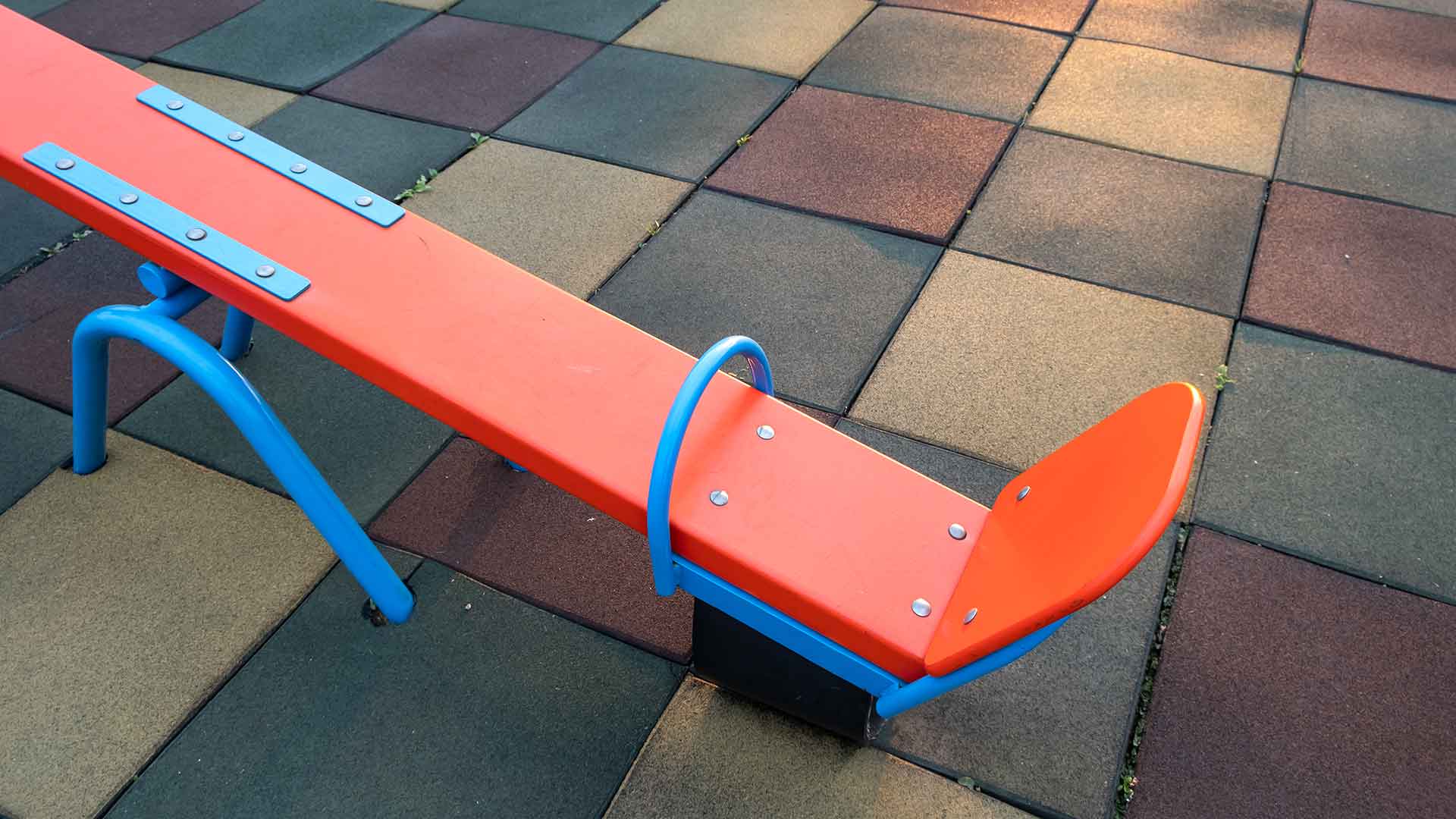

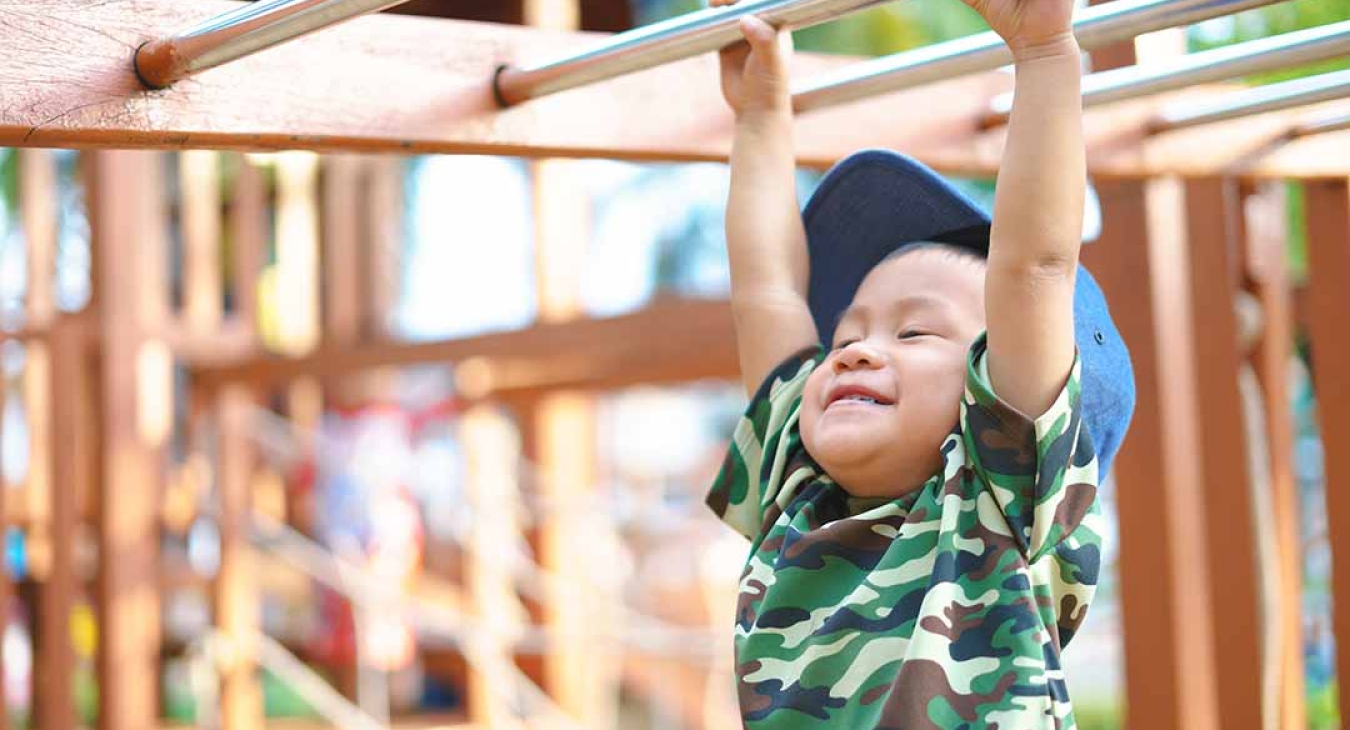
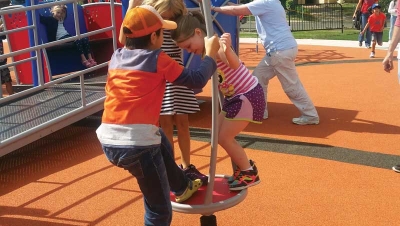
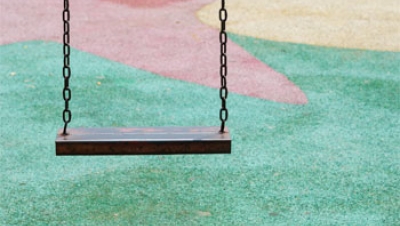








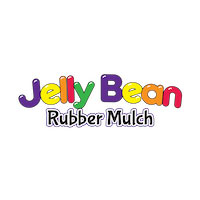

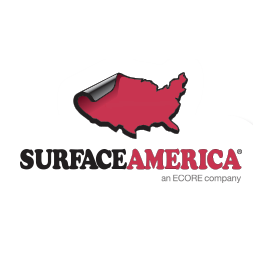


Fall Safe Surfacing
I have a peanut shaped soft fall safe surface material that I would like to send to you. Please direct me to the person or persons that would interested in this new surface material. Please send a response to [email protected] Thank You
Playground Surfacing
Right on. IT IS TIME FOR PLAYGROUND PROVIDERS TO EMBRACE AND PROVIDE
SURFACING THAT MINIMIZES FALL INJURIES.
Add new comment